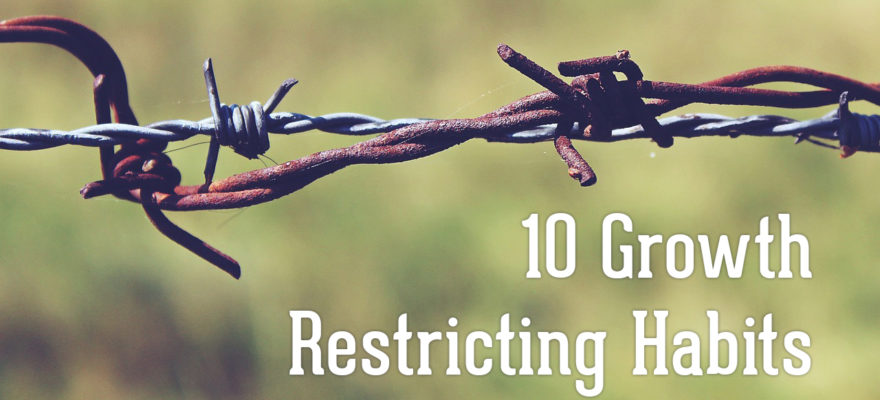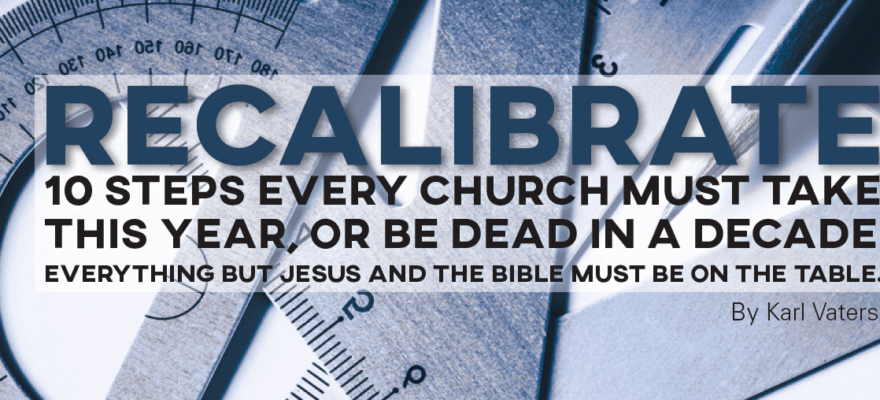By Carey Nieuwhof – Keynote speaker for the 2018 Mission & Ministry Summit
You know things are changing, but the real question is how quickly and how deeply.
Well, the change is pretty fast and pretty deep. In fact, unless you’re under 25, the world into which you were born doesn’t really exist anymore.
You may have heard of the Beloit College Mindset list. It comes out every year and often makes the news. The list is designed to get college faculty (and others) into the headspace of the entry class of mostly 18-year-olds. Essentially, it’s a tutorial on how much the world has changed since the people who will be teaching that class were in college.
Here are a few random snippets from the Class of 2019 mindset list (the entering students are on average 18 years old):
- The Lion King has always been on Broadway.
- They have never licked a postage stamp.
- Princess Diana, Notorious B.I.G., Jacques Cousteau and Mother Teresa have never been alive.
- Hong Kong has always been under Chinese rule.
- Hybrid automobiles have always been mass-produced.
Clearly, the world has changed.
It’s changed for church leaders too—radically. So what happens when church leaders move on unaware of what’s going on around them?
It’s simple. Church leaders who are out of touch never touch the culture.
Missing the change around you means you will:
- Increasingly speak a language people younger than you won’t understand.
- Make assumptions that aren’t widely shared or are just wrong.
- End up answering questions no one is asking.
So what changes do church leaders need to know? I can think of at least 10.
1. CHURCH ATTENDANCE IS NOW A FRINGE ACTIVITY
With the exception of a few U.S. communities (deep in the Bible Belt), nobody asks which church you attend anymore, because the assumption is you don’t go to church.
If respect for scripture is any indication of how people feel about Christianity, according to a recent Barna study, it’s pretty clear most cities in the United States are moving quickly away from some of the historic tenets of Christianity.
That doesn’t mean church attendance is impossible. It just means it’s not normal.
Take Las Vegas, Nevada. Only 14 percent of Las Vegans both read the Bible and believe it’s accurate in its principles. Yet Vegas has more than a few thriving churches, including Central Church with eight locations and upwards of 20,000 attendees. (You can hear Lead Pastor Jud Wilhite’s story on Episode 54 of my Leadership Podcast.) Churches like Central don’t fill up because people in Vegas are looking for a church to attend. Almost no one in Vegas is looking for a church to attend on a Sunday.
Churches like Central fill up because Christians invite their friends. Increasingly, church attendance is a fringe activity.
2. “ALL WELCOME” MEANS NOTHING
Almost every dying church has an “All Welcome” sign nobody takes seriously. Think about it, if you didn’t go to church, would you take that as an invitation? Next time you drive by a church building, ask yourself, “What would it take to convince me that I can walk in uninvited and participate in what they’re doing?”
Increasingly, I think unchurched people think about walking into a church the way you might think about randomly walking into a wedding to which you weren’t invited or into a corporate retreat for a company for which you don’t work. It would just be weird. In the future, about the only way non-Christians will keep showing up at Christian churches is via personal invitation. Regardless of what any sign might say, the real welcome comes from your members.
3. REGULAR CHURCH ATTENDANCE IS IRREGULAR
The assumption used to be that if you were a committed Christian, you would go to church every week. In fact, even most growing churches still silently run on that assumption, even as the leaders admit that weekly church attendance is far from the norm.
Culture has changed so radically in the last decade or two that even committed Christians aren’t in church as regularly as they used to be. (Here are 10 reasons why. careynieuwhof.com/10-reasons-even-committed-churchattenders- attending-less-often)
Honestly, this has got most church leaders still scrambling. Many church leaders are trying to figure out how to help people grow when they don’t go.
Innovators will have to figure out how to make sure that a step away from church attendance isn’t a step away from Christ, which, despite people’s best intentions, seems to be the case more often than not. Before you start to rail on the organized church and argue that ‘nobody needs church,’ (See also, careynieuwhof.com/impending-death-rebirth-cool-church).
4. A BAND, LIGHTS, AND HAZE ARE TRADITIONAL
You might have cashed in a lot of chips to redo your church’s approach to music over the last decade or two. And that’s wonderful. But increasingly, having a band and even lights and haze is pretty normal in many churches.

In fact, as Tony Morgan first noted a number of years ago, the way we do worship music in the ‘contemporary’ church is not that contemporary. In fact, the band, guitar, keyboard, and lights is the new traditional ‘rock’ worship. The culture has moved on to other music; hip-hop, R&B, DJ, pop and so much more.
Many ‘contemporary’ churches sound like they’re programmed for 50-year-olds. Culture sounds less like Coldplay or U2 and more like Bruno Mars, Drake, or Chainsmokers.
I’m not saying we should mimic everything. I’m just saying don’t think you’re current when you’re not. If you find this irritating, trust me, it is. It’s just that self-awareness is the key to so much. So be aware.
…the way we do worship music in the ‘contemporary’ church is not that contemporary. In fact, the band, guitar, keyboard and lights is the new traditional ‘rock’ worship.
5. THE SHOW NO LONGER CAPTIVATES
If you’re over 30, you remember the church of your childhood was probably trying to be ‘contemporary,’ they just weren’t very good at it. Church often provided a fairly low level of excellence in terms of singing, production and sometimes, speaking. That has changed massively.
With the connection that’s happened online, many preachers and musicians have become so much better at their craft. Production levels have soared at local churches. And it’s not enough.
I mean it’s good that we’re doing things well. But reaching people is about more than just doing what you do with excellence. It used to be that great preaching and great music grew a church. Now it’s more like the cost of doing business. Bad preaching and bad music can kill a church, but great preaching and great music don’t automatically generate church growth.
Something more fundamental is shifting. And it’s not all bad. In fact, it could be the rebirth of the church based on God’s movement and activity. Cool church is dying (careynieuwhof.com/impending-death-rebirth-coolchurch/) and something else is connecting with young adults in its place (careynieuwhof.com/5-surprisingcharacteristics- of-churches-that-are-actually-reachingthe– next-generation/).
6. YOUR CHURCH MEMBERS FOLLOW A DOZEN MINISTRY LEADERS WHO ARE NOT YOU
Go back to 40 years ago. Chances are the only pastor a church member knew was the pastor at their local church or their neighborhood church or someone they heard on TV or radio. Even in the ’90s and early 2000s, as culture changed, to ‘follow’ another preacher meant ordering their cassettes or CDs or tracking them in a very limited way in the early days of the Internet.
Contrast that to today, when many Christians actively listen to, read and follow more than a few other ministry leaders, subscribing to their podcast, reading their blogs and otherwise tracking with their church.
Insecure pastors might struggle with this. But if you can get over your insecurity, it’s not a bad thing. Secure leaders don’t compete with other church leaders, they complement them. Most of us may never preach like some of the top leaders out there. That’s OK. We need to be us. They need to be them. When you realize it’s a compliment, not a competition, everyone benefits.
7. GOD HAS BECOME GENERIC
As the Barna Group’s research has shown, even though most Americans self-identify as Christian, almost 50 percent function as post-Christian in their practices and beliefs. In other words, what people define as Christian and what constitutes genuine Christianity may be two different things.
Communicators and leaders, take note. It changes how we use the term ‘God.’
Trying to lead people into a relationship with God can mean almost anything to post-Christians, including their own definition of whatever spirituality might look like or feel like. Leading them into a relationship with Jesus is very different. In a post-Christian culture, God is generic. Jesus is specific and personal.
8. PEOPLE DON’T KNOW WHAT THEY’RE CONVERTING TO
It’s so easy to make assumptions that people who attend your church know what they’re stepping into. After all, don’t most people know what it means to be a Christian? Well, no they don’t. This problem has become so widespread in our post-Christian Canadian culture that I recently devoted an entire series (called Non- Committal) to explaining what people are converting to when they convert to Christianity.
Church leaders will have to become far more innovative in the language and metaphors we use to help people understand the basics of the Christian faith. It’s very difficult to become a Christian if you don’t even understand what that means.
9. BACKGROUND UNDERSTANDING IS OFTEN ZERO
In the same way that people don’t understand what becoming a Christian means or why it matters, post- Christian people have very little Christian background from which to draw. Again, that’s a communication challenge for church leaders. Gone is the era where any preacher can say “As we all know…” No, we don’t all know. We don’t know who Moses was, who David was, who Sarah was, or even really who Jesus was.
But can you tell us? Can you explain it in a way we all understand? The big surprise, of course, is that if you do this well, many Christians will thank you too. Because they didn’t really understand it either.
10. NO CHURCH CAN BE BETTER THAN SOME CHURCH
Our culture has gone through a few decades of people leaving the church. Often there are stories of heartbreak and disappointment there that really sting. Just read through the thousands of comments on this blog. You’ll see many. And it breaks my heart. But we’re moving in real time away from a generation of people who are done with church to a generation that doesn’t know church at all.
You would think that’s an obstacle, but perhaps it’s an opportunity. In a recent conversation I had with Ravi Zacharias, Ravi said the reception he’s receiving in nations where people never grew up in church is greater than in nations where people left church. They don’t have any hang-ups to overcome. (That conversation is Episode 83 of my podcast – https://careynieuwhof.com/mypodcast.)
What Signs Do You See? Those are the signs I see that the world we were born into no longer exists.




